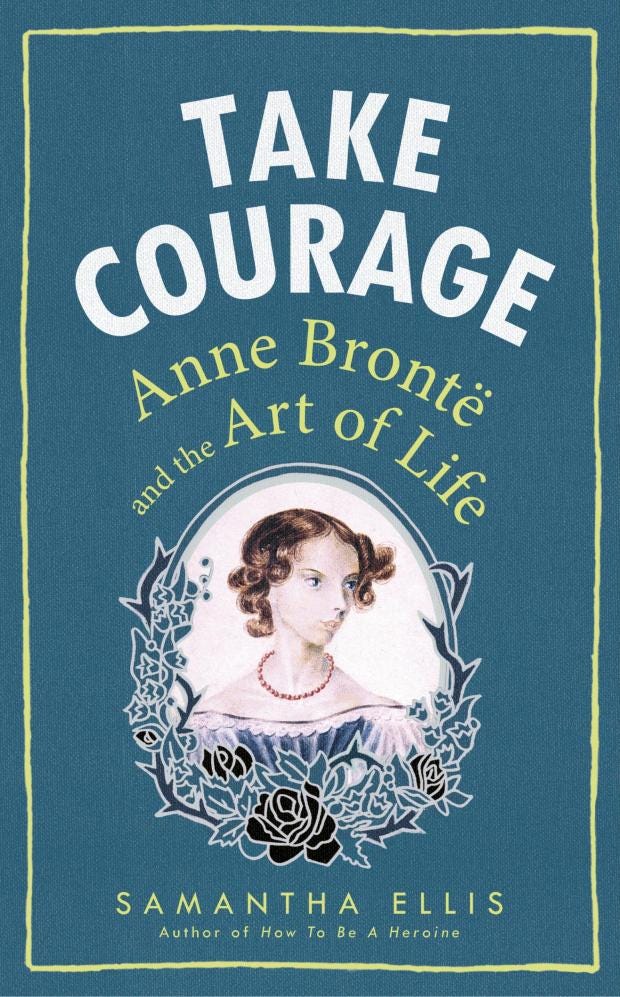A deeply sympathetic and interesting re-evaluation of a woman ahead of her time,Samantha Ellis turns her attention to the youngest of the Bronte sisters, Anne, in her latest book, and realises she wasn't as meek as she was presented, after reading a sprightly letter the author wrote five weeks before she died, aged 29

If you’ve read Samantha Ellis’s charming bibliomemoir How to be a Heroine – a heartwarming trip down memory lane as she looks back over the literary ladies that have shaped her life – you might be surprised to discover it’s Anne Brontë, the oft-overlooked “third Beatle” of England’s most famous literary siblings, who’s the subject of her second book, Take Courage: Anne Brontë and the Art of Life.
Better-known Charlotte and Emily were both integral to the journey recounted in How to be a Heroine, Ellis’s entire enterprise inspired by an argument with her best friend regarding the respective allure of passionate, headstrong Cathy Earnshaw versus dependable, independent Jane Eyre. The stories told in both Wuthering Heights and Jane Eyre are held aloft as grand romances, inspiring a host of adaptations, sequels and prequels from fan fiction through to Jean Rhys’s revisionist masterpiece, Wide Sargasso Sea. Similar approbation for Anne’s novel The Tenant of Wildfell Hall (1848) would be tricky since it lays bare the underbelly of the romance fantasy, taking a leading lady “who starts out like other Brontë heroines, charmed by a sexy dangerous man,” Ellis explains, “but she sees the light and leaves him.” As Ellis points out, this depiction of female agency was radical for its time. While readers today will no doubt find the story hugely “refreshing,” it wasn’t exactly what people either expected or wanted in the mid 1800s.
This novel (Anne’s second and final work) is central to Ellis’s project though, her modus operandi being to “see Anne through the stories she told, not the stories told about her,” especially since when it comes to the latter, there are two significant stumbling blocks. Firstly, nowhere near as much is known about the baby Brontë as compared to her more famous sisters; and secondly, what is available has been filtered through Charlotte, who suppressed the publication of The Tenant of Wildfell Hall after Anne’s death (by then she was the only surviving sibling). Hence the image of the “virginal Victorian spinster, sweet and stoic, selfless and sexless, achieving very little before wasting away at twenty-nine” has held sway. Not least over Ellis herself. Until, that is, the day she was shown Anne’s last letter, written only five weeks before her death. Despite the writer’s failing health, Ellis is captivated by the “hope and spirit” she sees on the page.
As such, Take Courage is as much an account of Ellis’s own discovery of Anne’s work as it is that of her subject’s life, and herein lies the book’s unique appeal. Ellis – who is, it should be noted, as intelligent and perceptive a reader as she is an evocative storyteller – truly writes from the heart, which isn’t to say she hasn’t done her research. She has. But if you’re looking for a run-of-the-mill scholarly biography heavy with footnotes, this isn’t what Take Courage is. Instead it’s a deeply sympathetic and interesting re-evaluation of a woman ahead of her time who has much to teach us all about living courageously
No comments:
Post a Comment